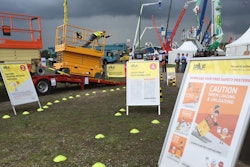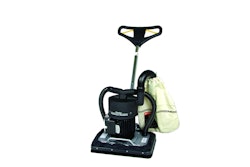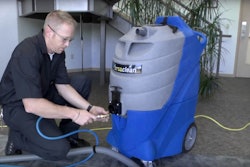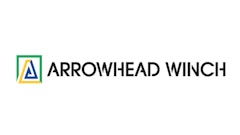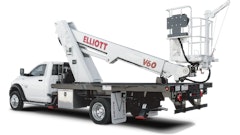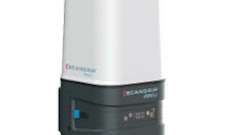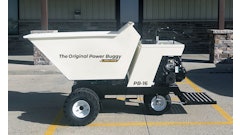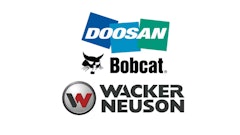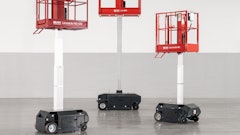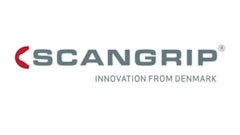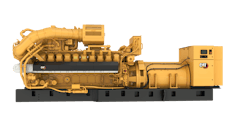
Data, data, data… business today is all about the effective use of information. Gathering this material is a pretty straightforward concept, but figuring out what to do with it can seem complicated, especially once you throw in some corporate jargon and a few trendy buzzwords. Perhaps you’ve heard the phrase “data mining” and maybe images of deep tunnels and dump trucks come to mind. What does it really mean to mine for data, and what do you need to do it? (Hint: it’s not a dump truck.)
We spoke with several management software suppliers to get a handle on what rental companies can do to make the most of the information their systems gather. Here’s what we found out:
Rental: What does the phrase “data mining” mean?
Matt Hopp, InTempo: The ‘data’ in data mining relates to the enormous reservoir of data that’s collected by rental software in the course of doing business. When you have the right tools to analyze this data, you can make smarter decisions for all aspects of your business. That’s the essence of the data mining process, and it’s something we actively encourage by coaching our customers on the advantages — particularly local and regional rental businesses that might not be aware of its potential. Other industries spend millions of dollars to collect huge volumes of data about customer behaviors. With rental, it’s captured automatically as a byproduct of everyday transactions.
Patrice Boivin, Orion Software: Data mining is the process of turning raw data into useful information. In any system, there is a large quantity of information that, separately, does not have much significance but with a relational database, it’s possible to make links between multiple types of data and to use it within the business environment.
Rental: How is data mining done?
Graham Dobbs, InspHire: Data mining through management software can be so easy. [Rental] contracts, purchase orders, workshop jobs and invoices are stored in a database, making information easy to find and accessible when you need it. Key business information and historical data will allow businesses to mine data at the click of a button using reporting tools which allow users to filter and customise relevant information. Reports can be used to assist with certain daily or weekly tasks. Data can also be exported to Excel to create pivot tables and charts to analyze the data in more detail.
William Eunice, Corporate Services: Typically, data sources containing information about sales, service, inventory, etc. are brought together into a central database. Sometimes, it becomes clear in trying to enumerate corporate goals that certain data points are not kept. In these instances, ways to capture that information reliably need to be included as part of the process. Before the data is brought in, it is organized into facts (the measurable things you want to know) and dimensions (the descriptors) and cleansed so that data from different sources can be properly aligned to give an accurate picture. You also want to define the granularity you want to get to in time. These are often daily summaries. An example would be revenue for a specific day for an asset. Depending on the scope and volume of the data, this process can result in something as thorough as a data warehouse. It is important to note though, there are often simpler options for smaller enterprises.
Hopp: The great thing about data mining is that the concept is fluid enough to address any objective or set of criteria as long as your software supports meaningful data extraction. Ask yourself what your goals and objectives are. Do you want to run promotions for underutilized equipment? Do you want to determine who your top 25 customers are so you can be sure to give them ‘VIP’ treatment? How about looking at return on inventory items before making purchasing decisions? Focus on the data that will help grow your business and go from there.
Rental: What does a rental company need to have and know in order to mine their data?
Eunice: The first thing is to have corporate goals that have measurable inputs and outputs that can be analyzed. Second, you need a system or group of systems that are capable of storing the data necessary to make these decisions. Third, you need a repository to collect this information and bring it together in a way where data can be related to each other so it makes sense. Finally, you need a set of tools to allow you to visualize the data in new and innovative ways and a means to publish them so that decision makers can have this information in their hands in a timely and flexible manner (at the office or on the go).
Dobbs: Good business decisions need accurate information that is available instantly. Knowledge is key, and tracking performance in real time helps rental companies keep their business on track to stay ahead of the game. Businesses need the tools to mine data and extract key information needed to make important business decisions. Companies should have a complete view of how their business is performing. To access real-time rental data at a glance, companies should be running up-to-date reports to see how the business performed last week or last month, last year; allowing businesses to react immediately. Making decisions with all the right information is priceless.
Rental businesses also need the power to build dynamic interactive reports showing the information they want. Whether it’s tracking outstanding quotes, overdue cash rental returns or items in the workshop, businesses decide what they want to see.
Companies might also want numerous reports as standard, from financial, operational to business reports giving businesses a comprehensive view of how they are performing. Rental businesses need the ability to track productivity and costs through ROI analysis; see costings, margins and profit. Having access to this information makes complex analysis simple.
For rental businesses, having a clear picture of how equipment is performing is crucial. Answer questions such as: what is the turnaround time for a standard service or breakdown and how much is your equipment costing? Having well maintained equipment and visibility of what is due for service or certificates that are due to expire allows you to better serve your customers.
Hopp: To mine data effectively, a rental business needs more than standard reporting. Your software should include robust analytics and dashboard capabilities. If you’re collecting all the data but don’t have the tools to analyze it, you’re sitting on a treasure trove with no way to uncover what’s beneath. Think about all the data flowing into your system from just one transaction. That’s the jumping off point for one of the most valuable uses of data mining: segmenting your customers. There are numerous ways to segment rental customers to drive new business: by past equipment rented, customer type, frequency, seasonal behavior, location, budget, trigger events such as first rental, referral source and more. Segmentation is the basis for targeted sales and marketing.
Boivin: You need to have a real relational database. Modern systems are normally developed using a database such as SQL or Oracle. By using such technology, this does not mean you have a real relational database. It needs to be developed the right way, with the correct links between the data.
Rental: What are some of the primary benefits of mining data?
Dobbs: Data mining can bring a rental business many benefits. They can use historical data to predict future trends as well as identify great customers, maximize equipment utilization and increase profits. It’s important that companies analyze their data on a regular basis in order to identify and anticipate the future and current needs of customers.
Boivin: It can be used to learn the pattern of customer behaviors and be used for future marketing strategies. In a rental company, it can be used for multiple proactive decisions. For instance, if a piece of equipment is scheduled to be shipped in the next few days and there is maintenance due or an availability problem, the system can send out alerts to its users. As well, some reports can be sent to upper management if anticipated revenues are lower than expected. It can also alert management of profitability issues prior to the delivery of equipment.
Hopp: The benefits of data mining flow through to every area of the business. For example, the balance between rates and utilization; many independent rental operators don’t revisit this often enough. There are a number of important reasons to keep the rate/utilization balance fluid: profitability, customer relationships, inroads against a competitor and changes to fleet mix are a few. Data mining can point to some immediate opportunities – for example, set rates by customer group or individual customer. This is sometimes calculated as a discount taken automatically off a standard rate, but in some systems it can also be set as a fixed, negotiated rate-set for a specified term.
Rental: What other functions can data mining be used for?
Dobbs: Rental businesses rely on their management software to tell them exactly what they need to know: do they have the right inventory levels, what equipment is making them the most money, what equipment has been sitting for long periods of time, do they need to dispose or purchase new equipment. It also helps identify great customers to whom the rental business can cross sell and upsell, in order to increase revenues and margins. Having the right equipment to serve customers whenever they need it means repeat business.
Boivin: Data mining can be used to identify lost rentals and be used in a purchasing plan. It is very useful to balance out and determine the equipment required in each branch to maximize availability and ROI. Pressure on item prices could be highlighted by mining a database in order to identify patterns such as reduced prices or excessive discounts. In day-to-day business, the system can send emails to customers reminding them that a delivery will be done within the next few hours or that the equipment is on its way and is expected to be on site at a certain time. In the CRM, data mining can capture the success of a salesman, given the probability of opportunities, expected sales cycle or many other factors combined.
Hopp: In the rental business, cradle-to-grave management of return on investment is crucial. Data mining can point to the best ways to spend your capital, and it instills confidence in lenders. If you plan to add a compressor to your fleet, mine your compressor data for knowledge about specific models, such as number of rentals, gross rental revenue, maintenance costs, utilization and overrides stemming from customer dissatisfaction. This will help you avoid a misstep – for example you’ll know if adding another 185-cfm unit to your fleet will bring in more revenue, even though the manufacturer is promoting 125-cfm models. At the end of the unit’s useful life, you can use data mining to fix a selling price using historical revenue data, maintenance history and net book value. If your rental software can’t give you the metrics you need to make these data-driven decisions, you may want to reassess whether it’s the right system for you.





